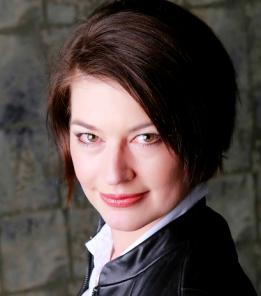8H30-9h25 - Coffee & Croissants
9h25-9h35 - Welcome Remarks
9H35-10:00 - Dr. Joseph Niemela (UNESCO - Abdus Salam International Center for Theoretical Physics, Trieste, Italy)
Science, Light and Sustainable Development
Abstract: Education and science are at the core of sustainable development, and UNESCO and its partner institutes such as ICTP work actively with the international scientific community to communicate this essential message. In particular, through mechanisms such as International Years and Days, it has been possible to effectively mobilize grassroots activities to reach millions worldwide and raise awareness of how science can address the many challenges we face in areas such as inequality, health, climate and prosperity. This talk will provide a brief overview of some particular ways in which light-based science and photonics impact on sustainable development, and will also summarize several recent ICTP initiatives in global outreach and education.
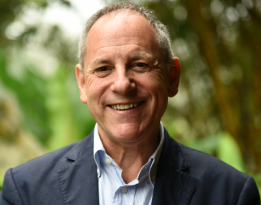
Joseph Niemela is a consultant and senior research scientist (retired) at the Abdus Salam ICTP, a UNESCO Category 1 Institute. In addition to conducting research in areas of fluid turbulence and low temperature physics, he also directs UNESCO’s teacher training program in optics and photonics, a Flagship activity of its International Basic Sciences Programme.He serves as Chair of the European Physical Society’s Group Physics for Development, Treasurer of the International Commission for Optics, and Secretary of IUPAP C13 commission, as well as a member of the Scientific Council of Centro Fermi in Rome. He is a Fellow of the American Physical Society, a recipient of its Dwight Nicholson Medal in 2016, and Vice Chair-elect (2020) of its Forum on International Physics.
https://www.ictp.it/research/ap/research/optics-and-laser-physics.aspx
10H00-10H45 - Prof. Rajarshi Roy (Institute for Physical Science and Technology, University of Maryland, USA)
Seeing the Light: Photons, Complexity and Randomness
Abstract: Seeing the light is no simple task – it is accomplished with a complex system consisting of our eyes and brain, which we are only beginning to understand in a rudimentary way. This is certainly good news – there is so much interesting science left to do and so many interesting discoveries to make, experimentally and theoretically. We will look at a few examples to illustrate these points, the highly interdisciplinary nature of the problems, and tools needed to begin to unravel them. We will conclude with a description of experiments to probe the transition from randomness to determinism in a simple optical feedback system, entropy production and random number generation.
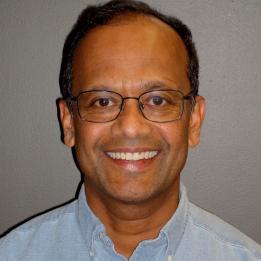
Rajarshi Roy was a student of Leonard Mandel at the University of Rochester, who taught him to design small scale table-top experiments and explore the nature of light and its interaction with atoms and molecules. Understanding order and randomness in light and matter has been a passion ever since. After receiving his Ph.D. in 1981, he went to Boulder, Colorado, as a postdoctoral research associate to work at the Joint Institute for Laboratory Astrophysics (JILA) and then moved to the School of Physics, Georgia Institute of Technology, in 1982. He worked there for seventeen years and was chair of the School when he moved to the University of Maryland, College Park, to set up a laboratory for research on the nonlinear dynamics of optical devices and systems. Since 1999 he has worked there in the Department of Physics, the Institute of Physical Science and Technology (he served as the director of IPST from 2003 - 2014), and the Institute for Research in Electronics and Applied Physics (IREAP). He is a Fellow of the Optical Society of America and the American Physical Society and has guided three dozen doctoral students and several postdoctoral researchers.
https://ireap.umd.edu/faculty/roy
10H45-11H30 - Prof. Daniele Faccio (School of Physics and Astronomy, University of Glasgow, UK)
Computational and Quantum Imaging
Abstract: The past years have seen the rapid development of a new camera technology that allows to detect single photons, quantum particles of light. Combined with artificial neural networks and AI that allow us to interpret the camera data, we can start to take images that have the potential to revolutionise future society. We will briefly mention one example, imaging behind walls and around corners before moving on to talk about the fascinating prospect of future cameras that can see inside your body or inside your brain. Such cameras could provide a wearable technology that reads blood flow in the brain and relates this to thought processes
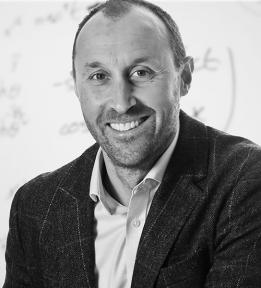
Daniele Faccio is a Royal Academy Chair in Emerging Technologies and Fellow of the Royal Society of Edinburgh. He joined the University of Glasgow in 2017 as Professor in Quantum Technologies and is adjunct professor at the University of Arizona, Tucson (USA). From 2013-2017, he was professor at Heriot-Watt University from 2013 where he was also deputy director of the Institute of Photonics and Quantum Sciences. He has been visiting scientist at MIT (USA), Marie-Curie fellow at ICFO, Barcelona (Spain) and EU-ERC fellow 2012-2017. He was awarded the Philip Leverhulme Prize in Physics in 2015, the Royal Society of Edinburgh Senior Public Engagement medal and the Royal Society Wolfson Merit Award in 2017. He worked in the optical telecommunications industry for four years before obtaining his PhD in Physics in 2007 at the University of Nice-Sophia Antipolis. His research, funded by the UK research council EPSRC, DSTL, The Leverhulme Trust, the EU Quantum Flagship program, focuses on the physics of light, on how we harness light to answer fundamental questions and on how we harness light to improve society.
http://www.physics.gla.ac.uk/XtremeLight/index.html
11H30-12H15 - Dr. Nina Meinzer (Senior Editor of Nature Physics)
Behind the scenes at Nature Physics
Dr Nina Meinzer is Senior Editor of Nature Physics that she joined in 2019 after previously working at Nature Communications. She obtained her PhD from the Karlsruhe Institute of Technology, where she studied plasmonic metamaterials and their interaction with semiconductor quantum heterostructures. She also carried out postdoctoral work at the University of Exeter, working on hybrid systems that combine plasmonic structures and emitters as well as studying microwave metamaterials.
https://www.nature.com/nphys/about/editors
12H15-12H30 - Discussions
12H30-14H00 - Lunch
14H00-14H45 - Prof. Hui Cao (Hui Cao Research Laboratory, Yale University, USA)
Physics and Applications of Complex Lasers
Abstract: Over the past sixty years, lasers have enabled major scientific and technological advancements, and have been exploited in numerous applications due to their advantages such as high brightness and high coherence. However, the high spatial coherence of laser illumination is not always desirable, as it can cause adverse artifacts such as speckle noise in imaging applications. Furthermore, the high-power broad-area lasers often suffer spatio-temporal instabilities that result from nonlinear interactions between the lasing modes and the active materials. We have developed novel lasers to suppress the spatio-temporal instabilities and to tune the spatial coherence of laser emission. Laser coherence control not only provides an efficient means for eliminating coherent artifacts, but also enables new applications.
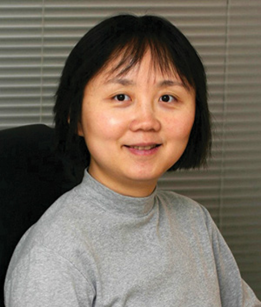
Hui Cao is the John C. Malone Professor of Applied Physics and of Physics, and a professor of Electrical Engineering at Yale University. She received her Ph.D. degree in Applied Physics from Stanford University in 1997. Prior to joining the Yale faculty in 2008, she was on the faculty of Northwestern University from 1997 to 2007. Her technical interests and activities are in the areas of mesoscopic physics, complex photonic materials and devices, nanophotonics, and biophotonics. She authored or co-authored one monograph, twelve book-chapters, seven review articles and 250 journal papers. She is a Fellow of the APS, OSA, AAAS and IEEE.
https://www.eng.yale.edu/caolab/
14H45-15H30 - Prof. Camille-Sophie Brès (Institute of Electrical Engineering, EPFL Lausanne, Switzerland)
Pushing Nonlinear Frequency Conversion in SiN Integrated Waveguides
Abstract: Silicon nitride (SiN) is an excellent CMOS fabrication compatible alternative for integrated nonlinear optics. Not only does it offer excellent linear properties, but also a wide transparency window extending from the visible to the mid infrared, and large bandgap which can be engineered by changing the material composition. In this talk we will cover how, thanks to recent developments in fabrication enabling large cross section waveguides, nonlinear broadening is reaching deeper in the middle infrared with high efficiencies. We will also cover how all-optical poling process can significantly enhance the typically weak second order nonlinearities of SiN, while offering versatility and reconfigurability.
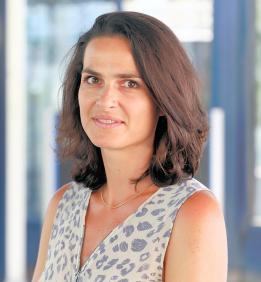
Camille-Sophie Brès is an Associate Professor in the Institute of Electrical Engineering within the School of Engineering of EPFL. Her primary research interests are centered on parametric and nonlinear processes in optical fiber and waveguiding platforms for ultrafast signal processing, all optical networks, sensing and light sources. She has authored over fifty peer-reviewed journal articles and has presented more than 15 invited papers at international conferences. She received the Gordon Wu Fellowship for her graduate studies, the NSF CIAN's Diversity Postdoctoral Fellowship in 2009, the Early Career Woman in Engineering Award in 2016. She is a senior member of the IEEE and OSA.
https://www.epfl.ch/labs/phosl/
15H30-15H45 - Coffee Break
15H45-16H30 - Prof. Sylvain Gigan (Laboratoire Kastler Brossel, Sorbonne Université, Paris)
Light Propagation in Complex Media - Imaging and Beyond
Abstract: Light propagation in complex media is an extremely challenging problem in optics, due to the multiple scattering of light. It is also an important issue in biomedical imaging, to develop optical methods able to penetrate tissues. I will show how wavefront shaping has, in the last decade, revolutionized the field and allowed diffraction-limited imaging through or in complex media. I will present some of our recent work in this direction, in particular in fluorescence imaging and towards functional imaging of neuronal activity.
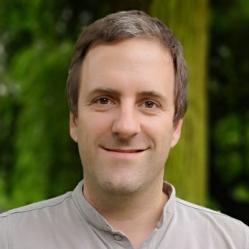
Sylvain Gigan is Professor in Physics at Sorbonne Université in Paris, and group leader in Laboratoire Kastler-Brossel, at Ecole Normale Supérieure (ENS, Paris). His research interests range from fundamental investigations of light propagation in complex media, biomedical imaging, sensing, signal processing, to quantum optics and quantum information in complex media. He is also the cofounder of a spin-off: LightOn (www.lighton.io) aiming at performing optical computing for machine learning and Big Data. He was awarded the Fabry de Gramont Prize of the French Optical Society in 2016, The Joseph Fourier ATOS prize in 2018, and is the recipient of two ERC grants in 2011 and 2016.
http://www.lkb.upmc.fr/opticalimaging/
16h30-17H15 - Prof. John Dudley (Institut FEMTO-ST, Université de Franche Comté, Besançon)
Light, Lasers and the Nobel Prize
Abstract: Outreach initiatives such as the International Day of Light provide ideal occasions to reflect on the many ways that advanced photonic technologies have revolutionized the world around us. Moreover, from a fundamental perspective, light science and technologies are key components of basic research in many disciplines, and are regularly recognized at the highest level by award of the Nobel Prize. The purpose of this talk is to review a selection of key results from Nobel Prize history, including prizes in physics, chemistry, medicine, and even an unexpected link with a Nobel laureate in literature! The talk will be non-technical and suitable for a general audience.
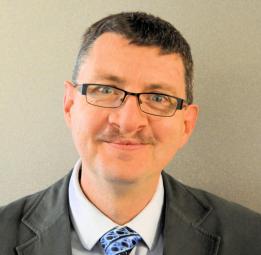
John Dudley is Professor of Physics at the University Bourgogne Franche-Comté and the CNRS Research Institute FEMTO-ST. His research covers broad areas of optical science for which he has received a number of distinctions, including the CNRS Médaille d'Argent in 2013 and the SPIE Edgerton Award for High-Speed Optics in 2019. He served as the President of the European Physical Society from 2013-2015, initiated the International Year of Light & Light-based Technologies held in 2015, and currently chairs the annual celebration of the International Day of Light. He is a Fellow of the EOS, OSA, and IEEE.

